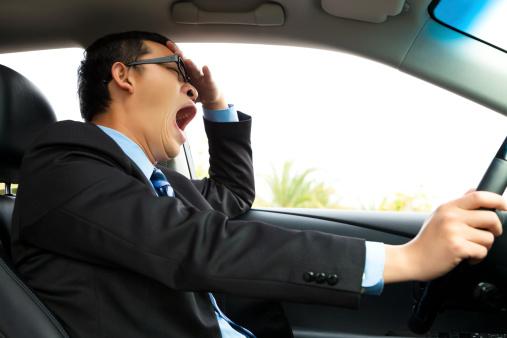Being a little tired and getting behind the wheel never phased anyone; people do it all the time. But, what most drivers do not realize is that drowsy driving is quickly becoming more dangerous than distracted or even drunk driving. And, drowsy driving does not just involve falling asleep at the wheel. Most accidents involving drowsy drivers were drivers who were awake, but drowsy.
When you are drowsy, you are:
- Less attentive to the road and your surroundings
- Less likely to respond to a situation as quickly as you would while wide awake
- Slower thinking and reaction times
- Suffering from slowed decision-making
Are You At Risk?
Drowsy driving isn’t just for truck drivers or inexperienced drivers. In fact, according to the National Highway Traffic Safety Administration, the following drivers are at risk:
- Adults between 18 and 29 are more likely to drive drowsy.
- Men are more likely to drive while drowsy than women.
- Men are twice as likely to fall asleep at the wheel compared to women.
- Adults with kids are more likely to fall asleep or drive drowsy.
- Shift workers are 36 percent more likely to drive drowsy.
The Micro-Sleep Factor
Drowsy drivers often suffer from micro-sleep, which is a temporary episode of sleep that could last just a fraction of a second and up to thirty seconds. During this time, the person cannot respond to arbitrary sensory inputs. Often micro-sleep occurs when a person is sleep deprived, but it can also occur in individuals who are not sleep deprived.
All it takes is a burst of micro-sleep to crash. Worse, that fraction of a second could be the difference of life and death. People who suffer from micro-sleep bursts may awaken too slowly to react in time to miss an accident, and the results could be deadly.
How to Prevent Drowsy Driving
Sleep is imperative for the body’s health and overall functionality. According to the National Institutes of Health, a person should get seven to eight hours of sleep every night, while younger adolescents and adults need up to ten hours. If you suffer from a sleep disorder, get that under control through professional help before getting behind the wheel. And, never drink or take a sedation medication before driving.
Most importantly, look out for the signs of drowsiness in yourself or the other party driving. These signs include:
- Yawning
- Difficulty remembering
- Missing turns or exits
- Drifting between lanes
- Excessive blinking or watery eyes
Have You Been Injured Because of a Drowsy Driver?
If you or a loved one has been in an accident involving a drowsy driver, you need a skilled accident attorney. The team of West Palm Beach personal injury attorneys at Sternberg | Forsythe, P.A. wants to help. We have years of experience dealing with drowsy driving cases and we can help you too.
Contact us today for a free consultation by calling 561-687-5660.

